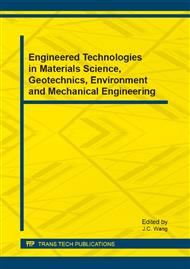p.362
p.371
p.375
p.379
p.383
p.387
p.391
p.395
p.399
Research of Indirect Lightning over-Voltage on Power Supply Cables
Abstract:
Indirect lightning over-voltage is one of the main ways to cause damage to the military power supply. Firstly, the waveform analog and destructive analysis of the lightning current is carried out. And then, the principles and calculation model of indirect lightning over-voltage are studied. According to dipole model the electromagnetic filed distribution laws at the discharge instantly time are acquired. Through the space and time-discrete processing, the numerical solution of electric and magnetic fields is forwarded. Finally, by a large number of simulation tests, the influence laws of lightning location, line length, lightning return stroke speed and termination resistor effect on induced overvoltage is discovered, which provides quantitative indicators to the lightning protection design of the military power supply.
Info:
Periodical:
Pages:
383-386
Citation:
Online since:
February 2013
Authors:
Price:
Сopyright:
© 2013 Trans Tech Publications Ltd. All Rights Reserved
Share:
Citation:


